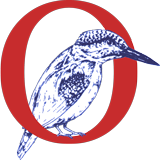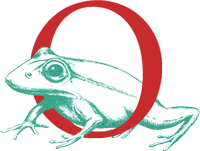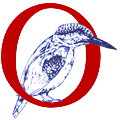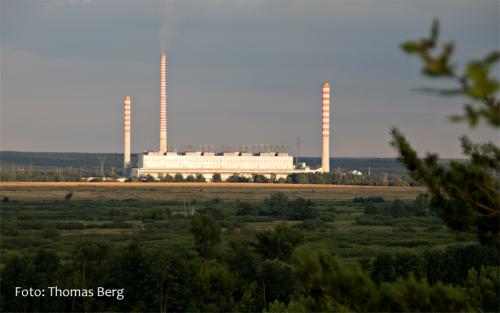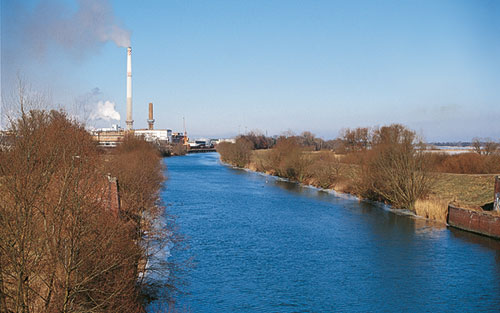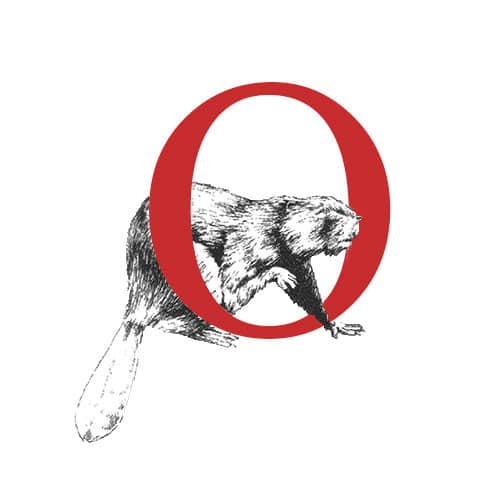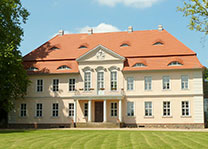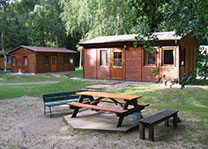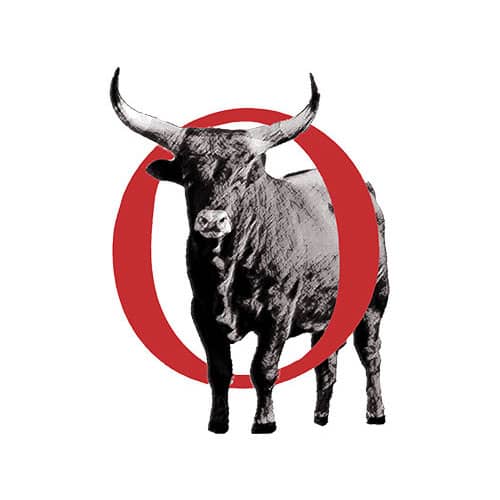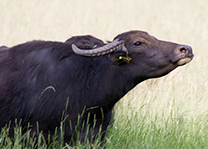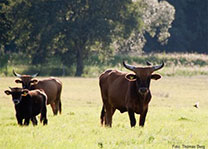Schwedt has been a designated industrial location since the 1960s. The industrial cores of the petrochemical and paper industries have managed the transition from a socialist planned economy to a social market economy with comparative success. Despite a drastic reduction in the workforce as a result of an equally drastic increase in productivity, Schwedt remains an important industrial location in Brandenburg.
On the Polish side, south of Greifenhagen (Gryfino), there is a large coal-fired power station that has been operating with a modern flue gas desulphurisation system for several years. Some time ago there was speculation in the Polish press that this could be the location for a first Polish nuclear power plant.
- Gryfino coal-fired power station
- Paper mill in Schwedt
The impact of industry on the environment, i.e. soil, air and water, is considerable. However, through the use of the most modern technology, in particular filter technology, they can be minimized to such an extent that an orderly coexistence of economy and nature conservation is possible after weighing the economic and ecological requirements. There are still enough former industrial areas available for further settlements.
After passing through the sewage treatment plant, the wastewater from the large Schwedt industrial companies is channeled through a thick sewer under the Hohensaaten-Friedrichsthaler Wasserstraße through the Fiddichower Polder (10) to the Stromoder. The new pipeline laid after the fall of the Wall and its supply route running parallel are a serious encroachment on the heart of the national park. Although the industry emphasized again and again during the new construction of the plant that the treated wastewater was almost of drinking water quality, the direct discharge into the Hohensaaten-Friedrichsthal waterway favored by nature conservation under these conditions was rejected because of its low flow speed and the several kilometers long sewage pipe across built through the national park to the Stromoder.
In the Lower Oder Valley, nature conservation and industry have always tried to focus on what they have in common, despite all the burdens. The representative photo book of the National Park Foundation Unteres Odertal with the title „Nationalparksymphonie Unteres Odertal“ supported at the time by the two paper mills (LEIPA Georg Leinfelder GmbH, UPM GmbH Schwedt). It is still available today in bookshops or in the association’s office.
